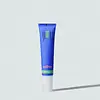What's inside
What's inside
 Key Ingredients
Key Ingredients

 Benefits
Benefits

 Concerns
Concerns

 Ingredients Side-by-side
Ingredients Side-by-side

Water
Skin ConditioningCaprylic/Capric Triglyceride
MaskingGlycerin
HumectantPolyglyceryl-3 Polyricinoleate
EmulsifyingBrassica Campestris Seed Oil
Skin ConditioningButylene Glycol
HumectantTapioca Starch
Hydrogenated Rapeseed Oil
EmollientXylose
HumectantPolyglyceryl-3 Diisostearate
EmulsifyingSimmondsia Chinensis Seed Oil
EmollientMagnesium Sulfate
Pentylene Glycol
Skin ConditioningSqualane
Emollient1,2-Hexanediol
Skin ConditioningCaprylyl Glycol
EmollientSodium Polyglutamate
HumectantSodium Citrate
BufferingXanthan Gum
EmulsifyingSodium Hyaluronate
HumectantTocopherol
AntioxidantMannitol
HumectantRhamnose
HumectantXylitol
HumectantAcetyl Dipeptide-1 Cetyl Ester
Skin ConditioningHelianthus Annuus Seed Oil
EmollientCitric Acid
BufferingFructooligosaccharides
HumectantWater, Caprylic/Capric Triglyceride, Glycerin, Polyglyceryl-3 Polyricinoleate, Brassica Campestris Seed Oil, Butylene Glycol, Tapioca Starch, Hydrogenated Rapeseed Oil, Xylose, Polyglyceryl-3 Diisostearate, Simmondsia Chinensis Seed Oil, Magnesium Sulfate, Pentylene Glycol, Squalane, 1,2-Hexanediol, Caprylyl Glycol, Sodium Polyglutamate, Sodium Citrate, Xanthan Gum, Sodium Hyaluronate, Tocopherol, Mannitol, Rhamnose, Xylitol, Acetyl Dipeptide-1 Cetyl Ester, Helianthus Annuus Seed Oil, Citric Acid, Fructooligosaccharides
Water
Skin ConditioningC10-18 Triglycerides
EmollientPanthenol
Skin ConditioningPropanediol
SolventButyrospermum Parkii Butter
Skin ConditioningCaprylic/Capric Triglyceride
MaskingDicaprylyl Ether
EmollientCetearyl Alcohol
EmollientHelianthus Annuus Seed Oil
EmollientPolysorbate 60
EmulsifyingEthylhexyl Stearate
EmollientCoco-Caprylate
EmollientGlyceryl Stearate
EmollientSodium PCA
HumectantHydroxyethyl Urea
HumectantCellulose
AbsorbentZinc PCA
HumectantCeramide NP
Skin ConditioningAmmonium Polyacryloyldimethyl Taurate
Emulsion Stabilising1,2-Hexanediol
Skin ConditioningCaprylyl Glycol
EmollientBisabolol
MaskingSodium Benzoate
MaskingPentaerythrityl Tetra-Di-T-Butyl Hydroxyhydrocinnamate
AntioxidantPotassium Sorbate
PreservativeSodium Gluconate
Skin ConditioningLactic Acid
BufferingWater, C10-18 Triglycerides, Panthenol, Propanediol, Butyrospermum Parkii Butter, Caprylic/Capric Triglyceride, Dicaprylyl Ether, Cetearyl Alcohol, Helianthus Annuus Seed Oil, Polysorbate 60, Ethylhexyl Stearate, Coco-Caprylate, Glyceryl Stearate, Sodium PCA, Hydroxyethyl Urea, Cellulose, Zinc PCA, Ceramide NP, Ammonium Polyacryloyldimethyl Taurate, 1,2-Hexanediol, Caprylyl Glycol, Bisabolol, Sodium Benzoate, Pentaerythrityl Tetra-Di-T-Butyl Hydroxyhydrocinnamate, Potassium Sorbate, Sodium Gluconate, Lactic Acid
 Reviews
Reviews

Ingredients Explained
These ingredients are found in both products.
Ingredients higher up in an ingredient list are typically present in a larger amount.
1,2-Hexanediol is a synthetic liquid and another multi-functional powerhouse.
It is a:
- Humectant, drawing moisture into the skin
- Emollient, helping to soften skin
- Solvent, dispersing and stabilizing formulas
- Preservative booster, enhancing the antimicrobial activity of other preservatives
This ingredient is an emollient, solvent, and texture enhancer. It is considered a skin-softener by helping the skin prevent moisture loss.
It helps thicken a product's formula and makes it easier to spread by dissolving clumping compounds.
Caprylic Triglyceride is made by combining glycerin with coconut oil, forming a clear liquid.
While there is an assumption Caprylic Triglyceride can clog pores due to it being derived from coconut oil, there is no research supporting this.
Learn more about Caprylic/Capric TriglycerideCaprylyl Glycol is a humectant and emollient, meaning it attracts and preserves moisture.
It is a common ingredient in many products, especially those designed to hydrate skin. The primary benefits are retaining moisture, skin softening, and promoting a healthy skin barrier.
Though Caprylyl Glycol is an alcohol derived from fatty acids, it is not the kind that can dry out skin.
This ingredient is also used as a preservative to extend the life of products. It has slight antimicrobial properties.
Learn more about Caprylyl GlycolHelianthus Annuus Seed Oil is the oil derived from the seeds of a Sunflower. Sunflower seed oil is non-fragrant. It is an emollient, meaning it helps to soften the skin.
Sunflower seed oil contains many fatty acids. The fatty acids found in sunflower seeds include (from highest amount to least): linoleic acid, myristic acid, palmitic acid, stearic acid, arachidic acid, oleic acid, and linolenic acid.
These fatty acids help the skin create ceramides. Ceramides play a role in repairing the skin barrier.
Helianthus Annuus Seed Oil helps moisturize the skin. This in turn helps the skin look more rejuvenated and smoother.
Sunflowers are rich in vitamin E.
Historians believe Indigenous cultures of North America domesticated sunflowers before corn. Thus they relied on sunflower oil for a variety of uses. One such use is moisturizing skin and hair.
Sunflower seed oil may not be fungal acne safe. We recommend speaking with a professional if you have any concerns.
Learn more about Helianthus Annuus Seed OilWater. It's the most common cosmetic ingredient of all. You'll usually see it at the top of ingredient lists, meaning that it makes up the largest part of the product.
So why is it so popular? Water most often acts as a solvent - this means that it helps dissolve other ingredients into the formulation.
You'll also recognize water as that liquid we all need to stay alive. If you see this, drink a glass of water. Stay hydrated!
Learn more about Water